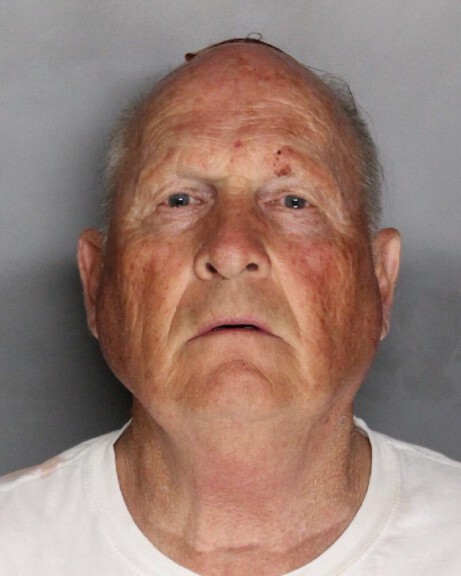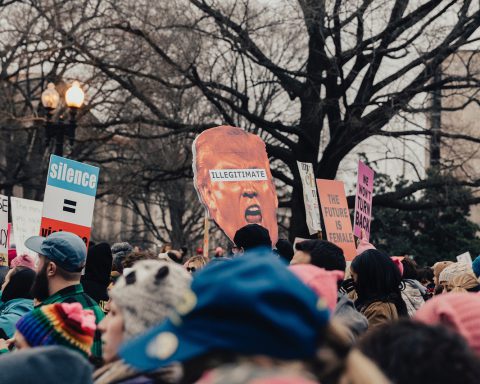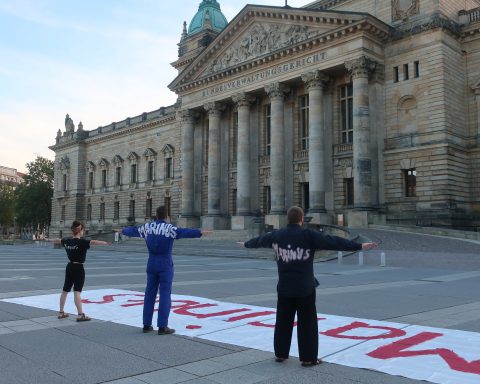Recently, we got the chance to interview Paul Haynes, one of the stars and co-executive producer of HBO’s I’ll Be Gone In The Dark. He had contributed both to finishing the seminal true crime book by Michelle McNamara and towards catching the prolific, heinous serial killer and rapist previously referred to as EARONS. Now, more than four decades after the former police officer began his reign of terror in California, DeAngelo pleaded guilty and was sentenced to life in prison.
Paul shared with us his observations and thoughts during the final days in court and takes a closer look at the DeAngelo’s apology statement and his behavior during the victim impact statements that preceded it.
By Paul Haynes
In late August, DeAngelo was sentenced to 11 consecutive life terms without the possibility of parole.
The sentence, which was handed down on a Friday, followed a week of victim impact statements in which survivor after survivor delivered statements that were alternately raw, heartbreaking, and angry, revealing the full spectrum of the trauma DeAngelo brought to their lives — all the while DeAngelo sat motionless, staring straight ahead, never looking at the victims.
After the second day of impact statements, one of the live streams faintly picked up DeAngelo interacting with his attorneys, as he explained his aversion to looking at the victims with his own discomfort over all the people in the gallery looking at him. He indicated he’d found a particular focal point on the wall that allowed him to see the victims peripherally without looking at them directly.
Just prior to his sentencing, DeAngelo — in a stunning and mostly unexpected moment — stood, removed his COVID mask, and spoke: “I’ve listened to all your statements. Each one of them. And I am truly sorry to everyone I’ve heard.” Though nearly all transcriptions of his statement read “to everyone I’ve hurt,” and it’s impossible to determine for sure if he said hurt or heard. (I believe it’s the latter.) What’s also impossible to determine is what DeAngelo was actually feeling while delivering this apology, and what motivated it.
I’m inclined to conclude that his apology was hollow and narcissistically motivated.
In the days that preceded it, a majority of impact statements called out DeAngelo for his cowardice, in his inability to look at any of the survivors as they spoke. And if there’s anything guaranteed to effect change in DeAngelo’s behavior, it’s calling him a coward. Being called cowardly in the press, in the 70s, for not attacking in houses with large dogs, and for only attacking lone women, is why he began attacking in houses with large dogs, and targeting couples. I believe this, too, is why DeAngelo chose to stand and deliver this perfunctory apology — to show that he’s no coward. It was a sharp contrast to the preceding two years of court appearances in which DeAngelo pretended to be frail, an invalid in a torpor, barely aware of his surroundings.
In fact, the Sacramento DA had, the day of his sentencing, released to the media ten minutes of surveillance footage from DeAngelo’s jail cell in which the 74-year old moved around with ease and agility, climbing upon his bunk and atop a table to clean and manipulate airflow vents and light fixtures — similar to his behaviors in victims’ houses, where he would drape towels and clothing over TV sets to create dim lighting.
DeAngelo’s apology statement is a fascinating piece of footage, one I’ve viewed countless times in an attempt to see through the cracks.
It’s the Mona Lisa of criminal mea culpas in its ultimate impenetrability; it’s impossible to say for sure if any part of it is sincere. What also remains unresolved are the hundreds of unanswered questions that linger in this case, questions I hope DeAngelo will answer someday — and hopefully someday soon, as he’s five years away from becoming an octogenarian.
Paul Haynes is the co-executive producer of I’LL BE GONE IN THE DARK (HBO), in which he also appeared. He’s also a contributor to the eponymous Michelle McNamara book, which he helped finish after the author’s unexpected death.
Freshly graduated from film school, Paul became involved in the Golden State Killer case around 2009, using online records and genealogical resources like Ancestry.com in an effort to identify the killer. He connected with Michelle in 2011 and became her research partner on the book. He currently has multiple projects in development, including REEL CRIME, a podcast about true crime in the cinema.










